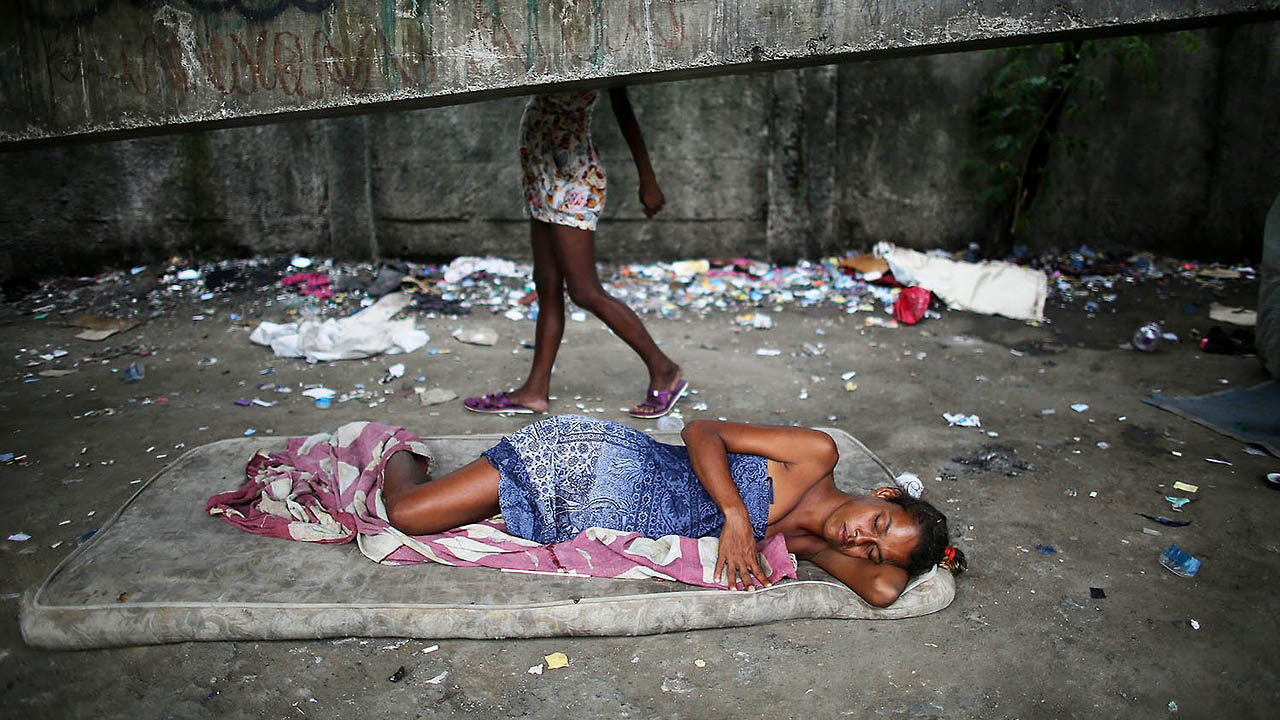Mario Tama, a staff photographer for Getty Images, first caught my eye a few months ago with this disturbing photo above taken in what the caption calls Rio de Janeiro’s “Cracolandia” (Read: “Crackland” or “Dope City”). In addition to the complexity of his layered compositions, the ‘daily life’ photos he’s been filing from Brazil ever since are compeling for their potential to offer a counterpoint to the state and corporate sponsor-sanctioned glossy imagery of the World Cup, which opens today.
There’s a common claim that bringing these types of international sporting events to underdeveloped regions also brings a flood of tourists, lasting infrastructure and a boom to the local economy reaching even the lowly street peddler — a touchstone of let-us-piss-on-you trickle down economics. This was in part the claim made for building a ridiculous $50 billion winter resort in sub-tropical Sochi for the 2014 Olympics, which likely will never be filled anywhere near capacity ever again.
Even though soccer is thought of as a kind of “religion” in Brazil, with the nation having won more championships than any other, millions are calling bullshit and have been protesting the event for over a year. Many see it as an opportunity to funnel tax money into the hands of corrupt politicians, real estate developers, hotel conglomerates, sex traffickers and mostly prominently FIFA, the tax-exempt, “comically grotesque” organization that produces the event. South Africa’s economy never saw a return on their $3.9 billion investment into hosting the last World Cup, and Brazil has already outspent them nearly three times over.
Tama’s photographs capture the poverty, inequality, crumbling infrastructure and brutal police state over which transit workers, teachers, security forces and others have been on strike in recent weeks. Though it is easy for a photographer to distance themselves from reality with their cameras and work visas and portray impoverished people looking impoverished, ruins looking ruinous to play on the emotions of one’s audience, Tama does not sentimentalize the plight of his subjects. He presents them matter-of-factly, with dignity. The effect could be likened to what Rob Hornstra and Arnold van Bruggen’s epic Sochi Project (currently on view at Aperture) does for the 2014 Olympics, putting a human face on where money could be better spent.
ANIMAL previously featured the work of photojournalists Kevin Frayer covering India’s elections, Brendan Hoffman covering the crisis in Ukraine and more. Follow Mario Tama on Twitter and Instagram. Click through on the photos for extended captions.
(Lead Image: Mario Tama/Getty Images; Caption: Drug users gather beneath an overpass in an area known as ‘Cracolandia’, or Crackland, in the Antares shantytown on December 10, 2013 in Rio de Janeiro, Brazil. According to the Economist, recent studies have shown Brazil to be the world’s largest crack market, with 1-1.2 million users. The use of crack has rapidly expanded and become a nationwide epidemic largely due to Brazil’s proximity to cocaine-producing countries and an increase in purchasing power within the country.)


